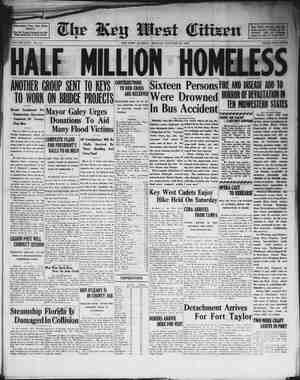Evening Star Newspaper, January 25, 1937, Page 16
You have reached the hourly page view limit. Unlock higher limit to our entire archive!
Subscribers enjoy higher page view limit, downloads, and exclusive features.
THE EVENING STAR, WASHINGTON, D. C., MONDAY, JANUARY 25 1937. ‘Who Are These Strangers in Town? Features of The United States News The Pictogram—a pictorial inven- tion which shows graphically the important event of the week. March of the News—a pungent, concise review of the highlights in the news. Tomorrow—a look ahead at what is most likely to happen based on current government action, back- ground, intention and public reac- tions. State of the Union—what is hap- pening in the national parade—the week’s news and its meaning. Congress Weekk—how both Houses are meeting the nation’s problems. Question of the Week—opinions of leaders and authorities on most important subject of the week. President’s Week—a vivid narra- tive of the activities of the Chief Executive. Y Voice of Government—pertinent statements by administration lead- ers. Voice of Business—views of busi- ness leaders on national problems. Tide of World Affairs—what’s go- ing on around the world that af- fects this country. Uncle Sam’s News Reel—a news story best told in pictures. What the States are Doing—how they- are meeting local problems, fitting into national program. What the Press of the Nation Thinks—a poll of the press on vital affairs. % Trend of American Business—par- ticularly as it affects government and government affects business. Finance Week—what government is doing to regulate financing of industry and government. Newsgrams—at least ten articles done in “newsgram” style—the es- sential happenings of the week in national affairs correlated in sim- ple and understandable form. Editorial Analysis of the week by David Lawrence. $2 A YEAR By Mail Anywhere in the United States REGULARLY they come to Washington on business—not just for inaugurations or cherry blossom time, but for the vital relationships which government nowadays has with every kind of business, Much of the money—millions of dollars—spent annually at the hotels, the shops, the restaurants, at the railroad ticket offices in Washington, come from these out-of-town guests. Many of them areregular readersof The United States News, the weekly newsmagazine of national affairs published in Washington. The United States News now has a circulation in excess of 70,000. This is steadily increasing because The United States News gives once a week for $2 a year what no other publication furnishes the people who live away from Washington—a succinct, interesting, factual story and interpretation of the essential happenings in our government together with an ou;cline of future trends. Ninety-eight per cent of the readers of The United States News reside outside of Washington—about two-thirds of them live only an overnight’s ride or less from the national capital. While we have 70,000 subscriptions on our list, an average of three persons read The United States News for every subscription entered. | To reach these 70,000 homes and offices across the continent with a single mailing piece (costing at least four cents each) would cost a Washington advertiser about $2,800. Toinserta full page of advertising, however,in The United States News would cost a Washington advertiser only $1,251 a pageona 13 times basis—a saving of about $1,550 on each message or announcement. The finest national advertisers in the country use The United States News. For the year 1936 in quantity of advertising lines published The United States News ranked tenth on the list of 136 national weekly and monthly magazines of the United States re- corded in the yearly compilation by “Printers’ Ink”, The United Stafes News 22nd and M Streets N. W. The only national class publication with such a commanding page size EVENLY DISTRIBUTED ACROSS THE CONTINENT TO 70,000 IMPORTANT PEOP_LE. Member Audit Burean of Circulations



